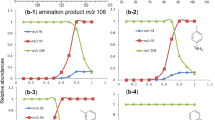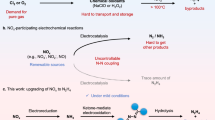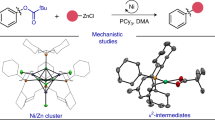Abstract
IN a recent communication in Nature, L. Herman and R. Herman1 have given an account of their spectroscopic study of the complex afterglow in nitrogen immediately after the discharge is stopped. These short-lived afterglows have also been extensively studied by Kaplan2. In this connexion, Herman and Herman remark that it seems difficult to explain the characteristics of the complex afterglow as recorded by them with the help of the theory of active nitrogen proposed by me3. It appears, however, that these authors have missed the very important point that my theory Was developed for the long-lived Lewis — Rayleigh afterglow, and not for the short-lived Kaplan afterglow, which is quite a distinct phenomenon. According to my hypothesis, the Lewis — Rayleigh afterglow phenomena, for example, the long life, the rate of decay, ionization, the characteristic spectrum (selected bands from the first positive group), etc., can be very satisfactorily explained if it is assumed that the active substance in the glow is N2+(X') ions. The Kaplan afterglows, however, contain besides N2+(X') ions other particles such as N2+(A'), N, N' which are responsible for the complex nature of the short-lived spectrum. It may, however, be mentioned in this connexion that in some of his experiments Kaplan has observed the persistence of the first negative bands for several seconds after the discharge is stopped. This provides a direct proof of the presence of N2+ ions, at least in the first stage of the afterglow. According to my hypothesis, the N2+ ions continue their existence even after the short-lived afterglows have died out and produce the phenomena associated with the Lewis — Rayleigh afterglow.
This is a preview of subscription content, access via your institution
Access options
Subscribe to this journal
Receive 51 print issues and online access
$199.00 per year
only $3.90 per issue
Buy this article
- Purchase on SpringerLink
- Instant access to full article PDF
Prices may be subject to local taxes which are calculated during checkout
Similar content being viewed by others
References
Herman, L., and Herman, R., Nature, 161, 1018 (1948).
Kaplan, J., papers published in the Physical Review from 1932 onwards.
Mitra, S. K., "Active Kitrogen—A New Theory" (Monograph), Indian Association for the Cultivation of Science, Calcutta (1945). See also Nature, 154, 212 and 576, 831 (1944).
Cario, G., and Kaplan, J., Z. Phys., 58, 769 (1929).
Kaplan, J., Nature, 149, 273 (1942).
Author information
Authors and Affiliations
Rights and permissions
About this article
Cite this article
MITRA, S. Nitrogen Afterglow. Nature 162, 774 (1948). https://doi.org/10.1038/162774a0
Issue date:
DOI: https://doi.org/10.1038/162774a0



